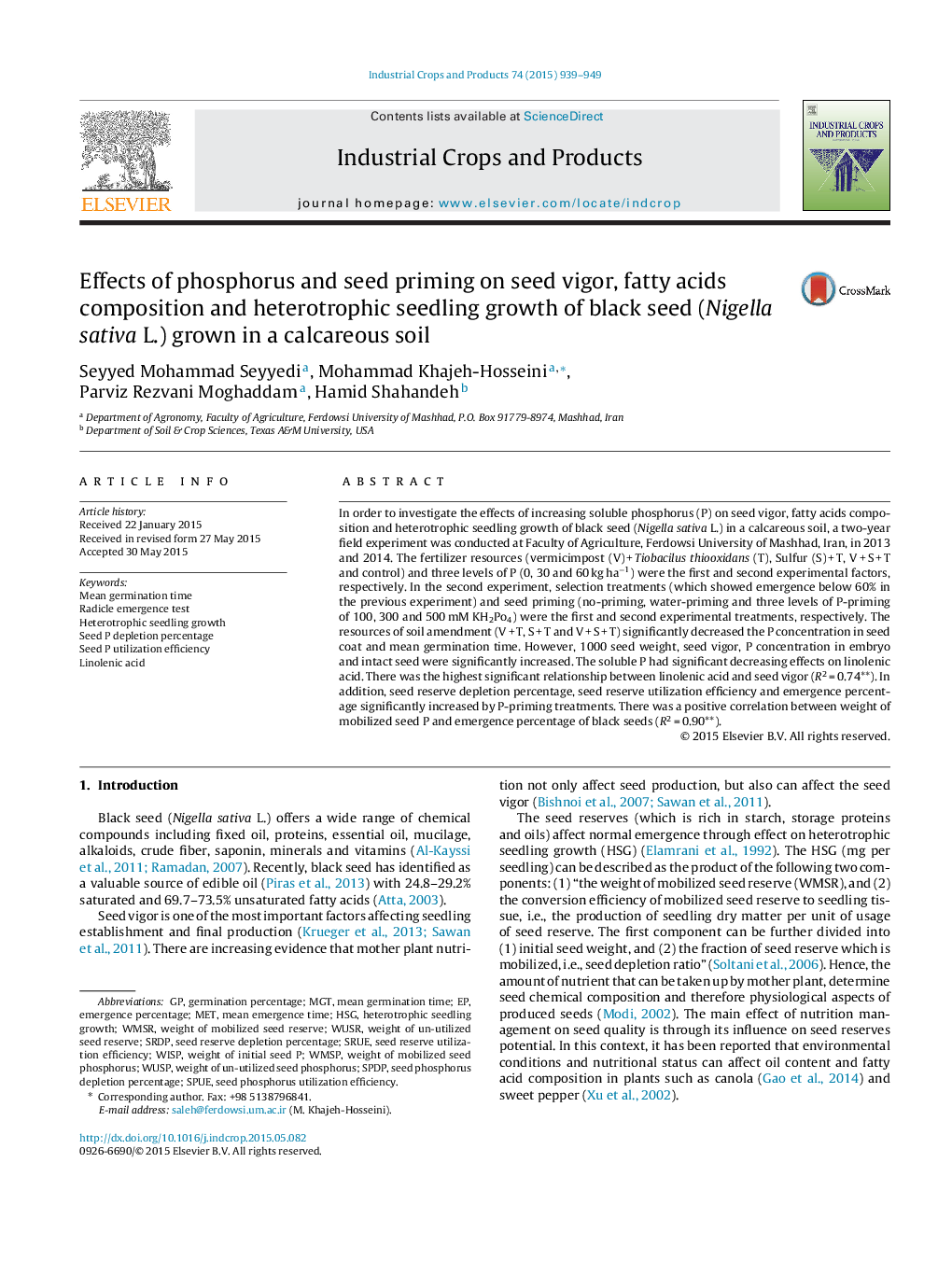| Article ID | Journal | Published Year | Pages | File Type |
|---|---|---|---|---|
| 6375865 | Industrial Crops and Products | 2015 | 11 Pages |
Abstract
In order to investigate the effects of increasing soluble phosphorus (P) on seed vigor, fatty acids composition and heterotrophic seedling growth of black seed (Nigella sativa L.) in a calcareous soil, a two-year field experiment was conducted at Faculty of Agriculture, Ferdowsi University of Mashhad, Iran, in 2013 and 2014. The fertilizer resources (vermicimpost (V) + Tiobacilus thiooxidans (T), Sulfur (S) + T, V + S + T and control) and three levels of P (0, 30 and 60 kg haâ1) were the first and second experimental factors, respectively. In the second experiment, selection treatments (which showed emergence below 60% in the previous experiment) and seed priming (no-priming, water-priming and three levels of P-priming of 100, 300 and 500 mM KH2Po4) were the first and second experimental treatments, respectively. The resources of soil amendment (V + T, S + T and V + S + T) significantly decreased the P concentration in seed coat and mean germination time. However, 1000 seed weight, seed vigor, P concentration in embryo and intact seed were significantly increased. The soluble P had significant decreasing effects on linolenic acid. There was the highest significant relationship between linolenic acid and seed vigor (R2 = 0.74**). In addition, seed reserve depletion percentage, seed reserve utilization efficiency and emergence percentage significantly increased by P-priming treatments. There was a positive correlation between weight of mobilized seed P and emergence percentage of black seeds (R2 = 0.90**).
Keywords
Related Topics
Life Sciences
Agricultural and Biological Sciences
Agronomy and Crop Science
Authors
Seyyed Mohammad Seyyedi, Mohammad Khajeh-Hosseini, Parviz Rezvani Moghaddam, Hamid Shahandeh,
